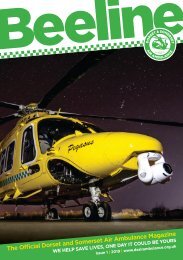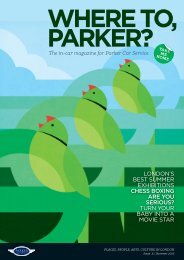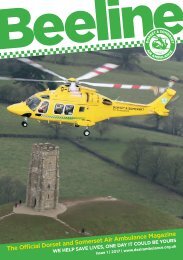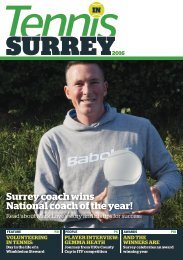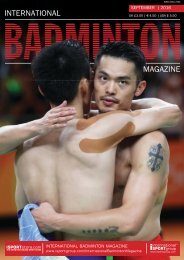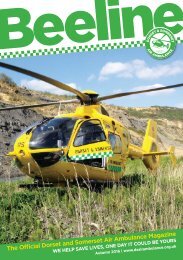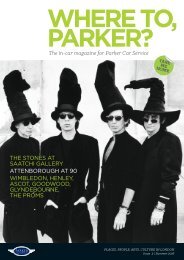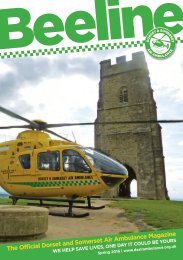Parker Cars Magazine: Issue 4
All things great about London
All things great about London
You also want an ePaper? Increase the reach of your titles
YUMPU automatically turns print PDFs into web optimized ePapers that Google loves.
david hockney<br />
Circle Line and do laps of the Tube, sleeping until<br />
the galleries opened. Then, still half-asleep, they<br />
would visit as many exhibitions as possible, before<br />
hitchhiking back to Yorkshire.<br />
Below: A Lawn Being<br />
Sprinkled (1967).<br />
Right: Model with<br />
Unfinished Self-Portrait<br />
(1977).<br />
Royal College of Art<br />
At the RCA in London in the late 1950s, Hockney<br />
finally felt the confidence to come out as a gay man.<br />
His painting blossomed as a result and he managed<br />
to secure his first dealer, John Kasmin.<br />
First New York visit<br />
Hockney flew to New York City for the first time in<br />
1961. A random viewing of a TV advert for a hair dye,<br />
with the catchphrase “Is it true blondes have more<br />
fun?” prompted him to go blonde himself. It was a<br />
look that soon came to define him.<br />
First love<br />
In 1966, while teaching art at UCLA, Hockney fell<br />
in love and moved in with a young student, Peter<br />
Schlesinger. It was during this period that he<br />
produced some of his most famous paintings such<br />
as A Bigger Splash and, later, Portrait of An Artist<br />
(Pool with Two Figures) (both previous page).<br />
Stage design<br />
In 1974 Hockney was asked to work on the stage<br />
design for Stravinsky’s opera The Rake’s Progress,<br />
for the following year’s Glyndebourne Festival.<br />
“When you’re working suddenly in another field, you<br />
are much less afraid of failure,” he told art historian<br />
Marco Livingstone in the 1996 book David Hockney.<br />
“You kind of half expect it. So therefore you take<br />
more risks, which makes it more exciting.”<br />
So began his career-spanning work in set design<br />
for both ballet and opera. Hockney claims that a<br />
neurological condition called synesthesia – which<br />
causes music to trigger the visualisation of colours –<br />
has influenced his work in this area.<br />
Some days were just glorious,<br />
the colour was fantastic. I can<br />
see colour. Other people don’t<br />
see it like me, obviously.”<br />
Relocation to LA<br />
Not long after the death of his father, in 1978,<br />
Hockney decided to make Los Angeles his<br />
permanent home. A year later he was living up in the<br />
Hollywood Hills. The long, twisty roads, the canyons<br />
and the views across the valleys had an obvious<br />
effect on the subject matter of his paintings.<br />
Photography<br />
In 1982 the Centre Georges Pompidou in Paris<br />
proposed an exhibition of Hockney’s photography.<br />
The artist started experimenting with composites<br />
using photographic prints, eventually culminating in<br />
his famous photo-collages of the Grand Canyon.<br />
Machined art<br />
The mid-1980s saw Hockney using an office<br />
photocopier to create his first home-made prints.<br />
It was the start of his fascination with the use<br />
of machines in art. He later used fax machines,<br />
computers, digital cameras, laser-jet printers and,<br />
more recently, iPads to create artworks.<br />
Back to Yorkshire<br />
In 1997 Hockney discovered that his old friend<br />
Jonathan Silver was dying of pancreatic cancer. To<br />
be close to him, Hockney moved back to Yorkshire,<br />
to the town of Bridlington, where his mother lived.<br />
During the summer he would regularly drive across<br />
the Yorkshire Wolds to visit Silver. “Going to see my<br />
20 where to, parker?




